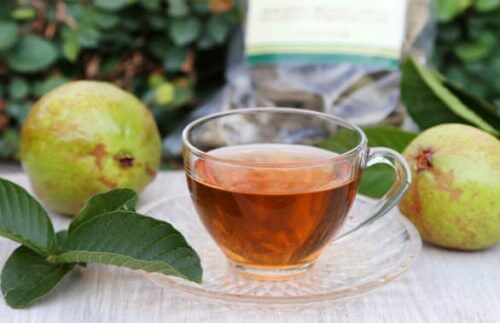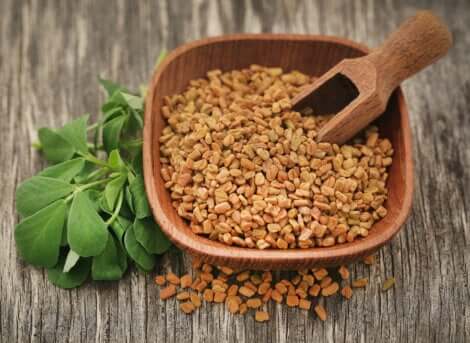How to Get Your Blood Sugar Under Control with These 5 Home Remedies


Reviewed and approved by the doctor Maricela Jiménez López
If you’ve already been diagnosed, monitor your blood sugar levels from now on. This way, you’ll feel good every day and prevent complications in the medium and long term.
High blood sugar levels may be caused by your pancreas not secreting enough insulin, or by having an insulin resistance. It’s a disorder that can affect the health of your eyes, kidneys, and cardiovascular system and that you should control.
In this sense, diabetes can originate from long-term practice of bad eating habits, but it’s also associated with having a sedentary lifestyle, obesity, and genetic factors.
The most concerning thing is that it generally doesn’t have obvious signs in its early stages. Thus, it’s easy for complications to develop.
Keep your blood sugar levels under control
The good news is that, with the practice of healthy habits and by following your doctor’s instructions, you’ll be able to regulate and control your blood sugar levels.
Given the diuretic and cleansing properties of their components, various remedies could facilitate glucose regulation. Here are some of options:
1. Guava leaf tea

Guava leaves have been used in natural medicine because of their high amounts of antioxidants, which help control blood sugar levels. This was stated in a thesis by researchers from the National University of San Marcos.
Its extracts contain a flavonoid known as quercetin, which has a hypoglycemic effect, as this study published in Medical Horizon, carried out with animals, shows. Thus, more research is required.
Ingredients
- 5 guava leaves.
- 2 cups of water (200 ml).
Preparation
- Add the guava leaves to a pot and cover them with a cup of water.
- Let them boil for five minutes and then remove from heat.
- Let sit until it reaches room temperature and strain if you like.
- You can drink a cup of this tea before each main meal, but never as a substitute for them.
Discover: Discover the Amazing Characteristics of Guava
2. Control your blood sugar levels with a sage infusion
It’s believed that the antioxidants sage contain help regulate blood glucose levels, thereby improving the use of insulin. In other words, it could be a supplement for the prevention of diabetes, as this study published in the British Journal of Nutrition states.
Ingredients
- 1 tablespoon of sage leaves (15 g).
- 1 cup of water (250 ml).
Preparation
- Heat the water.
- Add the sage leaves once it boils.
- Cook for three to five minutes.
- After this time, let cool and then strain.
3. Artichoke grapefruit water

Artichoke grapefruit water contains a glucide called inulin, which helps get your blood sugar levels back into balance. This drink provides dietary fiber and antioxidants that, among other things, regulate the lips that build up in the arteries. This publication in the Cuban Journal of Comprehensive General Medicine points this fact out.
Ingredients
- 1 artichoke (50 g).
- The juice of 2 grapefruits (60 ml).
- 3 cups of water (300 ml).
Preparation
- Chop the artichoke.
- Add it to a pot with the water. Heat until boiling.
- Once soft, remove from heat and let sit.
- Squeeze the grapefruits and add the juice to the artichoke water.
- Drink two to three times a day, preferably after eating.
4. Green tea
The regular consumption of green tea can reduce your risk of diabetes, thanks to its ability to increase your body’s sensitivity to insulin, improving its metabolic functions, as this study published in Chinese Medicine states.
It’s also worth mentioning that it helps prevent or fight obesity, one of the main causes of blood sugar imbalances.
Ingredients
- 1 cup of water (100 ml).
- 1 teaspoon of green tea leaves (5 g).
Preparation
- Heat the cup of water.
- Add the green tea leaves once it boils.
- Let steep for eight minutes and strain.
- You can drink a cup of green tea first thing in the morning, every day.
Want to learn more? What Happens to Your Body When You Drink Green Tea Every Day”
5. Fenugreek tea

According to some studies, such as this one from the Journal of Diabetes & Metabolic Disorders, fenugreek could be a good supplement to prevent type 2 diabetes in people with prediabetes due to lower insulin resistance.
Ingredients
- 3 tablespoons of fenugreek seeds (30 g).
- 2 cups of water (200 ml).
Preparation
- Heat the cup of water and add the fenugreek seeds.
- Let sit overnight and then crush the seeds in the morning.
- Strain the mixture.
- You can drink it first thing in the morning at least three times a week.
- Then, you can have breakfast as usual and carry on with your daily routine.
Remember to control your blood sugar levels
Remember that, although these drinks are made from natural ingredients and are capable of providing certain benefits, they shouldn’t be drunk as a main treatment or as a cure for any disorder.
In any case, they’re simply a complementary remedy to your lifestyle based on healthy and consistent habits. Remember to always ask your doctor what’s best for you.
Likewise, you must take into account that, in addition to drinking any of these remedies, it’s essential to avoid consuming refined sugar in all its presentations. Instead of turning to sweets, it’s best to increase your intake of fresh foods, such as fruits and vegetables.
All cited sources were thoroughly reviewed by our team to ensure their quality, reliability, currency, and validity. The bibliography of this article was considered reliable and of academic or scientific accuracy.
- American Diabetes Association. (2017). 2. Classification and diagnosis of diabetes. Diabetes care, 40(Supplement 1), S11-S24. https://care.diabetesjournals.org/content/diacare/40/Supplement_1/S11.full.pdf
- Inocente-Camones, M. A., Guija-Poma, E., Zarzosa-Norabuena, E., Loja Herrera, B., & Ponce-Pardo, J. E. (2015). Efecto hipoglicemiante de los extractos acuoso y etanólico de Psidium guajava L.(Guayaba) en ratas diabéticas inducidas por aloxano. Horizonte Médico, 15(2), 41-48. http://www.scielo.org.pe/scielo.php?pid=S1727-558X2015000200007&script=sci_arttext&tlng=en
- Palomino Pacheco, M. (2006). Propiedades antioxidantes y prooxidantes de Psidium guajava L.(guayaba). http://cybertesis.unmsm.edu.pe/bitstream/handle/cybertesis/2576/Palomino_pm.pdf?sequence=1&isAllowed=y
- Lima, C. F., Azevedo, M. F., Araujo, R., Fernandes-Ferreira, M., & Pereira-Wilson, C. (2006). Metformin-like effect of Salvia officinalis (common sage): is it useful in diabetes prevention?. British Journal of Nutrition, 96(2), 326-333. https://www.ncbi.nlm.nih.gov/pubmed/16923227
- Cabrera Llano, J. L., & Cárdenas Ferrer, M. (2006). Importancia de la fibra dietética para la nutrición humana. Revista Cubana de Medicina General Integral, 22(4), 0-0. http://scielo.sld.cu/scielo.php?script=sci_arttext&pid=S0864-21252006000400011
- Chacko, S. M., Thambi, P. T., Kuttan, R., & Nishigaki, I. (2010). Beneficial effects of green tea: a literature review. Chinese medicine, 5(1), 13. https://cmjournal.biomedcentral.com/articles/10.1186/1749-8546-5-13
- Gaddam, A., Galla, C., Thummisetti, S., Marikanty, R. K., Palanisamy, U. D., & Rao, P. V. (2015). Role of Fenugreek in the prevention of type 2 diabetes mellitus in prediabetes. Journal of Diabetes & Metabolic Disorders, 14(1), 74. https://www.ncbi.nlm.nih.gov/pmc/articles/PMC4591578/
This text is provided for informational purposes only and does not replace consultation with a professional. If in doubt, consult your specialist.








